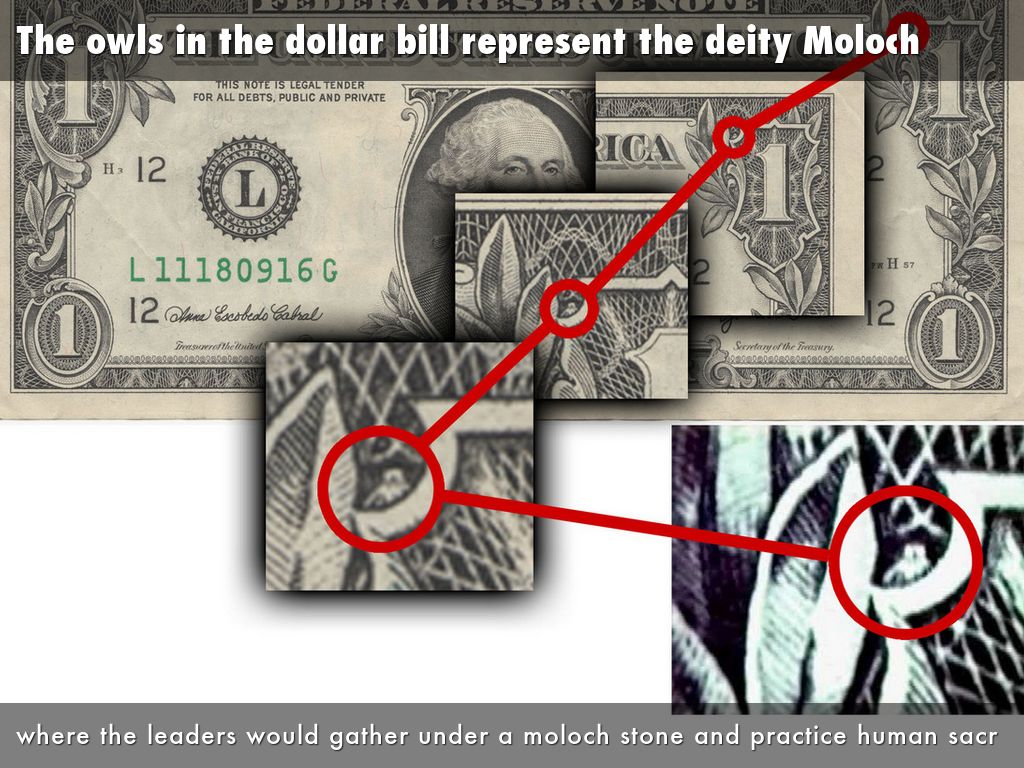The United States one-dollar bill, a ubiquitous symbol of American commerce, has been the subject of myriad conspiracy theories. Among the more persistent is the notion of a hidden owl, subtly embedded within the bill’s intricate design. This perceived avian presence, purportedly nestled near the upper-right corner of the bill’s face, has fueled speculation about secret societies, governmental symbolism, and esoteric messages woven into the fabric of American currency.
Let us delve into the specifics of this intriguing claim, dissecting the visual evidence, exploring the counterarguments, and examining the historical context that has allowed this conspiracy theory to flourish.
The Alleged Owl: Where to Look
The focal point of the owl conspiracy theory is a small, unassuming area on the right side of the one-dollar bill, just above the denomination numeral “1.” Proponents of the theory claim that when one examines this area closely – perhaps with the aid of magnification – a distinct owl-like figure becomes apparent. The purported owl’s features include a head, eyes, and even what some interpret as feather-like details. To find it, you must focus on the filigree present within the dollar bill’s design.
Visual Analysis: Seeing is Believing?
The interpretation of the “owl” is, of course, subjective. The human brain is adept at pattern recognition, a phenomenon known as pareidolia. This cognitive bias can lead individuals to perceive familiar shapes or figures in random or ambiguous stimuli. A cloud resembling an animal, a face in a rock formation – these are examples of pareidolia at play. Skeptics argue that the “owl” on the dollar bill is simply a result of this phenomenon, with proponents selectively interpreting the intricate design elements to fit their preconceived notions.
Moreover, the printing process itself introduces variability. Minute imperfections in the engraving, plate wear, and ink distribution can all contribute to slight variations in the appearance of the design, potentially exaggerating or distorting the perceived owl-like shape. The resolution and quality of printed bills are also factors which can influence what one perceives.
Counterarguments: The Role of Design and Security Features
The Bureau of Engraving and Printing (BEP), the government agency responsible for producing U.S. currency, vehemently denies the existence of any hidden symbols or messages within the dollar bill’s design. The intricate patterns and filigree, they assert, are purely aesthetic and intended as security features to deter counterfeiting. These complex designs make replication difficult, requiring sophisticated engraving techniques and specialized printing processes. The BEP maintains that the “owl” is simply a coincidental byproduct of these security-oriented design elements.
Furthermore, the dollar bill has undergone numerous redesigns throughout its history, with each iteration incorporating increasingly sophisticated anti-counterfeiting measures. The persistence of the purported “owl” across these different versions suggests that it is unlikely to be a deliberate inclusion. It’s not a smoking gun, so to speak.
Historical Context: Conspiracy Theories and Currency
The owl conspiracy is just one thread in a larger tapestry of currency-related conspiracy theories. From claims of hidden Masonic symbols on the Great Seal of the United States (featured on the back of the dollar bill) to allegations of secret societies controlling the Federal Reserve, U.S. currency has long been a magnet for speculation and intrigue.
This fascination with hidden meanings in currency is rooted in a broader cultural distrust of authority and a penchant for uncovering hidden narratives. Currency, as a tangible representation of economic power and governmental authority, becomes a convenient target for suspicion and speculation. Add to this the inherent mystique surrounding financial institutions and governmental opacity, and the stage is set for conspiracy theories to flourish.
The Freemason Connection: A Tangential Exploration
A frequent companion to the owl theory is the alleged connection to Freemasonry. The Great Seal, prominently displayed on the back of the dollar bill, contains symbols that have been interpreted as Masonic in origin. The all-seeing eye atop the unfinished pyramid is often cited as evidence of Masonic influence, fueling speculation that the owl itself is another Masonic symbol subtly embedded within the design. However, direct evidence linking the owl to Freemasonry remains scant, relying primarily on speculative interpretations and circumstantial associations.
The Psychological Appeal: Why Conspiracy Theories Persist
Conspiracy theories, including the owl-on-the-dollar-bill narrative, offer a sense of understanding and control in a complex and often unpredictable world. They provide simple explanations for intricate events, allowing individuals to feel like they possess privileged knowledge that others lack. This sense of empowerment, coupled with the allure of uncovering hidden truths, can be deeply satisfying, even in the absence of concrete evidence. Moreover, conspiracy theories often resonate with pre-existing beliefs and anxieties, reinforcing individual worldviews and strengthening social bonds within like-minded communities.
Debunking the Myth: A Rational Perspective
While the owl conspiracy theory may be intriguing, it ultimately lacks compelling evidence. The “owl” itself is a subjective interpretation of ambiguous design elements, likely a result of pareidolia. The Bureau of Engraving and Printing unequivocally denies the existence of any hidden symbols, and the historical context of currency design suggests that security features, not secret messages, are the primary drivers of the intricate patterns found on the dollar bill. While the allure of uncovering hidden truths is undeniable, critical thinking and evidence-based reasoning are essential when evaluating extraordinary claims.
Ultimately, the question of whether there is a secret owl on the one-dollar bill boils down to a matter of interpretation and belief. While the design may lend itself to pareidolic interpretations, a dispassionate assessment of the evidence suggests that the owl is more likely a figment of our pattern-seeking minds than a deliberate inclusion by the Bureau of Engraving and Printing.
